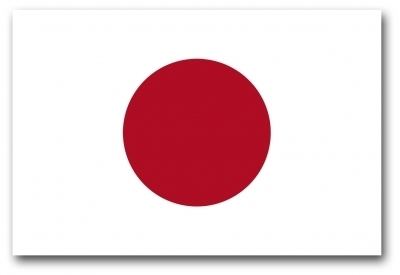Formed June 1, 1949 Founded 1 June 1949 Number of employees 56,315 | Website Official website Headquarters Tokyo Annual budget 721.9 billion JPY (2003) | |
 | ||
Agency executive Commissioner, Mitsutaka Inagaki (稲垣光隆) Profiles | ||
Nta network news 10 02 2017
The National Tax Agency (国税庁, Kokuzei-chō, Abbr.: NTA) is the official tax collecting agency of Japan. As of 2014, the Commissioner of NTA is Mitsutaka Inagaki.
Contents
- Nta network news 10 02 2017
- National tax agency practicum cohort 20 2015 2016
- The Mission of National Tax Agency
- Creation of the National Tax Authority
- Budget and Personnel
- Voluntary Reporting System
- Self Assessment
- Blue Return System
- Mutual Agreement Procedures
- International Coordination
- References
National tax agency practicum cohort 20 2015 2016
The Mission of National Tax Agency
Mission: To enable taxpayers to properly and smoothly fulfill their tax responsibility.
To achieve the mission stated above, National Tax Agency is responsible for fulfilling the responsibilities stipulated in Article 19 of the Law to Establish the Ministry of Finance, while paying due consideration to transparency and efficiency.
Creation of the National Tax Authority
On June 1, 1949, NTA was established as Finance Ministry’s affiliated agency responsible for assessing and collecting national taxes. Until then, this role was performed by Tax Bureau of Finance Ministry. Immediately after the Second World War, tax administration did not function properly as the Tax Bureau had undertaken out-of-scope operations. This organizational reform established NTA’s current three-tiered organizational structure consisting of the head office, regional taxation bureaus and tax offices. NTA consists of the headquarters office, 11 regional taxation bureaus (Sapporo, Sendai, Kanto-Shin-Etsu, Tokyo, Kanazawa, Nagoya, Osaka, Hiroshima, Takamatsu, Fukuoka and Kumamoto), Okinawa Regional Taxation Office and 524 tax offices throughout the country.
NTA’s headquarters office has four departments: Commissioner's Secretariat; Taxation Department; Revenue Management and Collection Department; and Examination and Criminal Investigation Department.
Examination and Criminal Investigation Department at regional taxation bureau level examines large-scale corporation’s corporate and consumption taxes and investigates tax evasion cases.
The local tax office is a front-line administrative body in charge of assessing and collecting domestic taxes and has the closest contacts with taxpayers. Tax office is authorized to assess and collect domestic taxes within its responsible area. Its organization structure varies, depending on tax office’s scale. Generally, a tax office has 1 division and 4 groups: co-ordination division, revenue management and collection group, examination group (individual), examination group (property tax), and examination group (corporation).
Budget and Personnel
As of the end of FY2003, the number of employees stands at 56,315.
As of FY2003, the total budget for tax collection operating costs stands at 721.9 billion yen.
The cost to collect 100 yen of tax and stamp duty revenues (return on collection) is 1.78 yen as of FY2003, while it was 2.79 yen in FY1950.
Voluntary Reporting System
Japan relies on the self-assessment along with withholding tax system with respect to specific income and blue return systems. The due date for payment of 2011 income tax is Thursday, March 15, 2012.
Self-Assessment
In the self-assessment taxation approach, taxpayers calculate their taxable income, file tax returns and pay their taxes due. This taxation system basically presupposes taxpayer’s willingness to pay taxes, continue accurate bookkeeping behavior and calculate their taxable income based on objective data. This approach was adopted, in 1947, under the strong influence of the United States taxation system.
Blue Return System
Proper operation of the self-assessment taxation system requires regular and accurate bookkeeping by taxpayers. To foster the practice of bookkeeping, the blue return system was introduced in 1950 as a part of comprehensive tax reform based on the recommendations of Dr. Carl Shoup.
Under the blue return system, an individual who operates a business or a corporation may obtain the district director’s approval to file a tax return using a special form printed on blue paper. While these taxpayers are required to maintain books and keep continuous accounting records in accordance with prescribed standards, they are entitled by law to various income calculation benefits and preferential treatments.
Today, the blue return system is widely accepted. There are 4.95 million blue return personal taxpayers, and more than 2.6 million corporations are filing blue returns.
Mutual Agreement Procedures
During the FY 2010, the NTA received 157 MAP cases, of which were on BAPA. The United States and Canada are treaty partners for MAP case purposes.
The Pacific Association of Tax Administrators (PATA) issued internal operational guidance in respect of mutual agreement procedures (MAP) and bilateral advance pricing arrangements (BAPA). PATA is composed of representatives from the tax administrations of Australia, Canada, Japan, and the United States.
International Coordination
On June 21, 2012, Japanese authorities [the Financial Services Agency (FSA), the Ministry of Finance (MOF) and the National Tax Agency (NTA)] and the United States authority (the Treasury Department) have released a joint statement regarding a framework for intergovernmental cooperation to facilitate the implementation of FATCA and improve international tax compliance.
